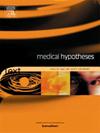Calcium phosphate cement-magnesium alloy composite scaffold for diaphyseal fracture fixation: a hypothesis
IF 2.1
4区 医学
Q3 MEDICINE, RESEARCH & EXPERIMENTAL
引用次数: 0
Abstract
For the treatment of long bone diaphyseal fractures, traditional orthopedic implants have limitations such as stress shielding, non-degradability, and soft tissue damage. In this study, we proposed a hypothesis that a novel calcium phosphate cement (CPC)-magnesium alloy composite scaffold would be applicable to reduce stress shielding and enable personalized treatment through structural surface modification techniques. Its biodegradable property might eliminate the need for secondary surgeries, while the products of degradation would synergistically promote bone healing. A modified surgical approach was suggested to minimize medullary cavity expansion, reduce joint and soft tissue trauma, and shorten recovery time. This concept may offer a novel therapeutic strategy for diaphyseal fractures to alleviate patients’ physiological, psychological, and financial burdens. In the future, the research directions may involve interface reinforcement, dynamic in vivo degradation-osteogenesis matching, and clinical translation validation.
磷酸钙水泥-镁合金复合支架用于骨干骨折固定:一种假设
对于长骨骨干骨折的治疗,传统的骨科植入物存在应力屏蔽、不可降解性和软组织损伤等局限性。在这项研究中,我们提出了一个假设,即一种新型的磷酸钙水泥(CPC)-镁合金复合支架将适用于减少应力屏蔽,并通过结构表面改性技术实现个性化治疗。其可生物降解的特性可能消除二次手术的需要,而降解的产物将协同促进骨愈合。建议采用改良手术入路,以减少髓腔扩张,减少关节及软组织损伤,缩短恢复时间。这一概念可能为骨干骨折提供一种新的治疗策略,以减轻患者的生理、心理和经济负担。未来的研究方向可能包括界面强化、体内动态降解-成骨匹配、临床翻译验证等。
本文章由计算机程序翻译,如有差异,请以英文原文为准。
求助全文
约1分钟内获得全文
求助全文
来源期刊

Medical hypotheses
医学-医学:研究与实验
CiteScore
10.60
自引率
2.10%
发文量
167
审稿时长
60 days
期刊介绍:
Medical Hypotheses is a forum for ideas in medicine and related biomedical sciences. It will publish interesting and important theoretical papers that foster the diversity and debate upon which the scientific process thrives. The Aims and Scope of Medical Hypotheses are no different now from what was proposed by the founder of the journal, the late Dr David Horrobin. In his introduction to the first issue of the Journal, he asks ''what sorts of papers will be published in Medical Hypotheses? and goes on to answer ''Medical Hypotheses will publish papers which describe theories, ideas which have a great deal of observational support and some hypotheses where experimental support is yet fragmentary''. (Horrobin DF, 1975 Ideas in Biomedical Science: Reasons for the foundation of Medical Hypotheses. Medical Hypotheses Volume 1, Issue 1, January-February 1975, Pages 1-2.). Medical Hypotheses was therefore launched, and still exists today, to give novel, radical new ideas and speculations in medicine open-minded consideration, opening the field to radical hypotheses which would be rejected by most conventional journals. Papers in Medical Hypotheses take a standard scientific form in terms of style, structure and referencing. The journal therefore constitutes a bridge between cutting-edge theory and the mainstream of medical and scientific communication, which ideas must eventually enter if they are to be critiqued and tested against observations.
 求助内容:
求助内容: 应助结果提醒方式:
应助结果提醒方式:


